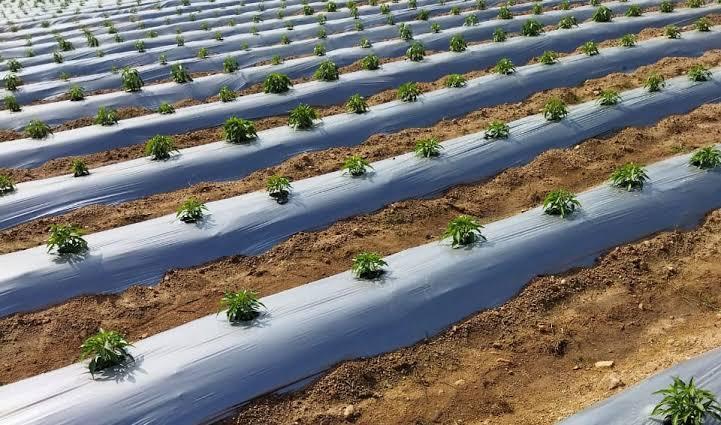The Art Of Mulching: A Key Agricultural Practice
Mulching, a traditional yet essential agricultural practice, is often considered both a science and an art. This technique involves applying a layer of material to the soil surface to enhance plant growth, improve soil health, and promote environmental sustainability. As agricultural practices evolve, the art of mulching remains a cornerstone of effective and sustainable farming. This blog post explores the key aspects of mulching, including its benefits, types, and best practices, and highlights why mastering this technique is crucial for modern agriculture.
Understanding Mulching
Mulching is the process of covering the soil around plants with a layer of material, which can be organic or inorganic. The primary objectives of mulching are to conserve soil moisture, suppress weeds, regulate soil temperature, and improve soil health. By creating a protective barrier, mulch helps to create an optimal growing environment for plants, contributing to their overall health and productivity.
Benefits of Mulching
1. Moisture Retention
One of the most significant benefits of mulching is its ability to retain soil moisture. Mulch acts as an insulator, reducing evaporation and helping to maintain consistent soil moisture levels. This is particularly important in regions prone to drought or where water resources are limited. By conserving moisture, mulch reduces the need for frequent irrigation, saving both water and energy while ensuring that plants have a steady supply of moisture.
2. Weed Suppression
Mulching effectively suppresses weed growth by blocking sunlight from reaching weed seeds. This prevents weed germination and reduces competition for nutrients and water between weeds and crops. Effective weed control not only promotes healthier plants but also decreases the need for herbicides and manual weeding, leading to cost savings and reduced labor.
3. Temperature Regulation
Mulch helps regulate soil temperature by providing insulation. In hot weather, mulch keeps the soil cooler by shading it from the sun, which prevents soil overheating and root damage. In colder weather, mulch acts as a blanket, retaining soil warmth and protecting plant roots from frost. This temperature regulation contributes to more stable plant growth and can extend the growing season.
4. Erosion Control
Mulching plays a vital role in preventing soil erosion, especially on sloped terrain or in areas prone to heavy rainfall. By protecting the soil surface from wind and water impact, mulch reduces soil erosion and maintains soil structure. This is crucial for preserving soil fertility and preventing sediment runoff into water bodies.
5. Soil Enrichment
Organic mulches decompose over time, adding valuable organic matter to the soil. This decomposition process improves soil structure, increases nutrient content, and promotes beneficial microbial activity. Enriched soil supports better root development and overall plant health, contributing to higher crop yields and more resilient plants.
6. Pest and Disease Management
Certain types of mulch can help manage pests and diseases by creating an environment that deters harmful organisms. For example, reflective mulches can repel insect pests, while well-decomposed organic mulches can suppress soil-borne diseases by creating a less favorable habitat for pathogens. Additionally, mulch helps protect plant roots from physical damage and temperature extremes, reducing the risk of stress-related diseases.
Types of Mulch
-
Organic Mulch: Derived from natural materials, organic mulch includes options such as straw, wood chips, leaves, and compost. Organic mulches decompose over time, adding nutrients to the soil and improving soil health.
-
Inorganic Mulch: Includes materials like plastic, rubber, and gravel. Inorganic mulches do not decompose and are used for their durability and low maintenance. They are effective for moisture conservation, weed control, and erosion prevention.
-
Living Mulch: Involves growing cover crops or ground covers that provide soil protection and other benefits without competing significantly with primary crops. Living mulches help improve soil fertility, reduce erosion, and support sustainable farming practices.
-
Fabric Mulch: Made from synthetic materials, fabric mulch includes weed barrier fabric and erosion control fabric. These materials provide effective weed control and erosion management while allowing water and nutrients to pass through.
Best Practices for Mulching
-
Choosing the Right Mulch: Select mulch based on the specific needs of your crops, soil conditions, and environmental factors. Organic mulches are ideal for soil enrichment, while inorganic mulches are useful for long-lasting coverage and erosion control.
-
Application Thickness: Apply mulch in a layer that is thick enough to provide benefits but not so thick that it hinders water infiltration or air circulation. A typical mulch layer ranges from 2 to 4 inches, depending on the material and its purpose.
-
Proper Application: Spread mulch evenly around the base of plants, avoiding direct contact with plant stems or trunks to prevent moisture buildup and potential rot. Leave space around the base of plants to allow for proper air circulation.
-
Regular Maintenance: Monitor mulch for signs of decomposition or displacement. Organic mulches may need to be replenished periodically as they break down. Inorganic mulches should be checked for effectiveness and adjusted as needed.
-
Avoiding Mulch Overuse: While mulch offers many benefits, overuse or improper application can lead to issues such as waterlogged soil or reduced oxygen levels. Balance mulch application with other soil management practices to ensure optimal plant health.
Conclusion
The art of mulching is a key agricultural practice that offers numerous benefits for soil health, plant growth, and environmental sustainability. By understanding the different types of mulch and their advantages, farmers and gardeners can make informed decisions to enhance their agricultural practices. Whether using organic materials to enrich the soil or inorganic options for durability, mastering the art of mulching contributes to a healthier, more productive, and sustainable farming system. Embracing mulching as an integral part of agricultural management can lead to improved crop yields, reduced environmental impact, and a more resilient agricultural landscape.









